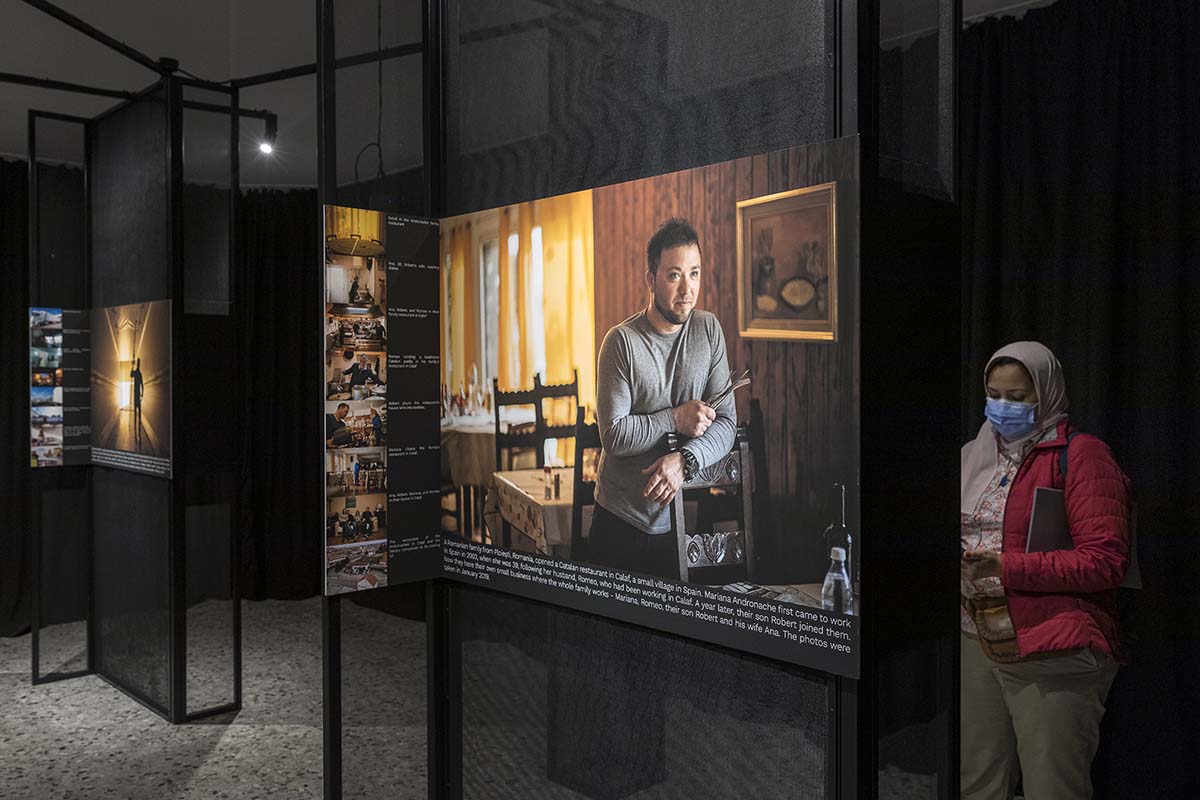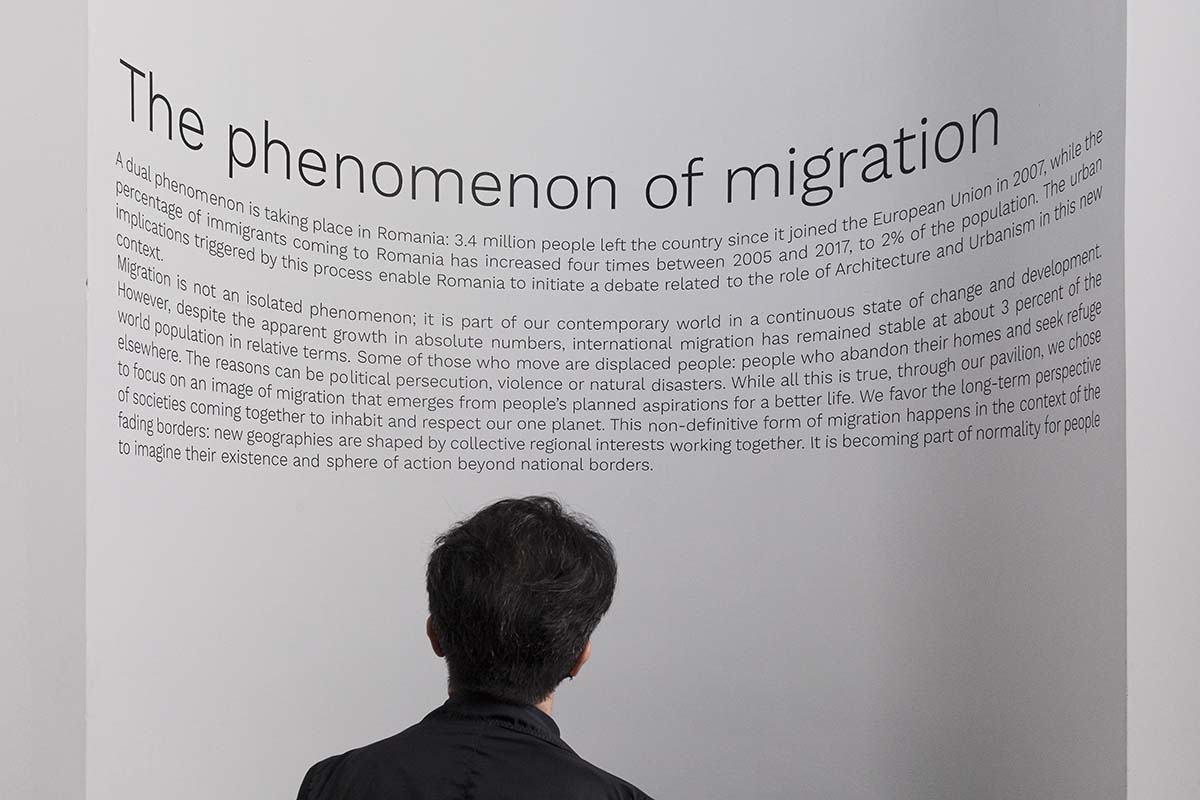Submitted by WA Contents
Romanian Pavilion explores mass migration and future forms of housing at Venice Architecture Biennale
Italy Architecture News - May 22, 2021 - 15:38 6410 views

The Pavilion of Romania is presenting an exhibition that explores mass migration and the future forms of housing at the 2021 Venice Architecture Biennale which has opened its doors to the public on May 22 in Venice, Italy.
In response to the theme "How will we live together?" set by the curator Hashim Sarkis, the Romanian Pavilion's exhibition, themed as Fading Borders, focuses on a global phenomenon, a reality that ranks top in the public agenda of the international community.
Curated by the team of architects Irina Melita, Stefan Simion, Cristi Bradescu, Stefania Hirleata and Radu Tirca from the POSTER architectural office, the team raised the questions, such as What are the stories of the ones who left? How has life changed for the ones that stayed? Does development equal expansion? How do we need to design our cities to enhance life quality in a perpetual changing social architecture? What role does architecture play to help us live together in healthy and prosperous communities?.

The exhibition showcases a case study by focusing on Romania where over 3 million Romanians left the country in the last decade. As the curatorial team highlighted, "the migration wave translated into individual success stories beyond country’s borders, but also into a depopulation issue that has slowly deprived the left-behind cities with the precise attributes of urban life."
However, the curatorial team underlined that the exhibition is not framed around a Romanian story. According to them, it is a universal story for our contemporary societies that face the masses’ migration that generate huge challenges, but also huge opportunities.

The aim of the Romanian Pavilion is to foster a constructive debate about the contribution that architecture can bring to a successful management of the migration phenomenon.

"Fading Borders emphasizes and opens the conversation about how the mobility of large masses of people will impact the way architects could imagine future forms of housing in the broad sense," said Stefan Simion.
"Migration has been so far a phenomenon related to poverty, war, natural disasters, but the reality of migration should be brought to the centre of discussions about how we shall live, how cities will live, because, most likely, this phenomenon will expand and it will be linked to the pursuit of improving the quality of life."
"So, we want to initiate a constructive, positive debate, a look to the future, a hypothetical discussion about how we will live together when the word "together" becomes very diverse, and the duration of the housing acquires a different dynamic," Simion added.

The tension between the two realities (the ones that left and what is left behind) is depicted by the scenography concept of the pavilion that divides the space in two: on one side visitors emerge into the universe of the Romanian emigrants, and on the other side people meet the Shrinking Cities of Romania showcasing both their current vulnerabilities, but focusing on the opportunities that can bring back hope and welfare.

The story line of the pavilion is deeply human-centered and appeals not only to our brains, but mostly to our emotions as universal citizens.
In this sense, "Fading Borders" integrates two complementary projects – Away and Shrinking Cities in Romania.


Away is an independent journalistic survey of a team of Teleleu that have themselves left the comfort of their home to travel around the world and document authentic stories right where they happen. The documented stories showcase the stories of struggle, success, hardships and fulfillment of Romanian emigrants that, in fact, tell the universal story of the migrants that search for a better life somewhere away from home: adjusting to new environments, facing inclusion issues (jobs, customs, housing, citizenship etc.), creating new communities and new cultures. All these lively exchanges of experiences give new twists in our perspective of what it means to live together.

Shrinking Cities in Romania is an in-depth research on the post-communist shrinkage of Romanian cities, developed by IdeilaGRAM. Statistical data show that most Romanian cities, of different sizes and types (small touristic towns, large and small industrial ones, agricultural towns, old historic cities, harbors by the Danube) are facing various forms of decline: socio-cultural, economic, physical, demographic.
Rather than focusing on a pessimistic outlook, the study welcomes a constructive understanding of the phenomenon. Contrary to the common wisdom, shrinkage is embraced as a vector for modernization and innovation, re-use, alternative resources, artistic creation, and revaluation of interpersonal relationships.

In contribution to the Romanian Pavilion's theme, acknowledged architects answered the question of "How will Migration influence Architecture and the City?" to shape the debate by gathering a series of international contributions which were featured in MAZZOCCHIOO magazine, a publication curated by the project team.




The Romanian Pavilion is located in the Giardini and hosted at the New Gallery of the Romanian Institute of Culture and Humanistic Research in Venice.
The 17th International Architecture Exhibition in Venice has opened to the public on 22 May 2021. The exhibition will be on view till 21 November 2021.
This year’s architecture biennale is themed as "How will we live together?" by the curator Hashim Sarkis, the theme explores a widening context that helps architects to "imagine spaces in which we can generously live together".
Romania Pavilion exhibition facts
Commissioner: Attila Kim
Curators and Exhibition Design: POSTER / Irina Meliță, Ștefan Simion, Cristian-Andrei Bădescu, Ștefania Hîrleață, Radu Tîrcă
Exhibitors: TELELEU / Elena Stancu and Cosmin Bumbuț; IDEILAGRAM / Ilinca Păun Constantinescu, Tudor Constantinescu, Iulia Păun, Alexandru Păun, Gabriela Belcineanu, Laura Popa-Florea; MAZZOCCHIOO Journal: Ștefan Simion, Irina Meliță, Radu Tîrcă, Cristian Bădescu, Ștefania Hîrleață.
All images © Laurian Ghinitoiu
> via Fading Borders
